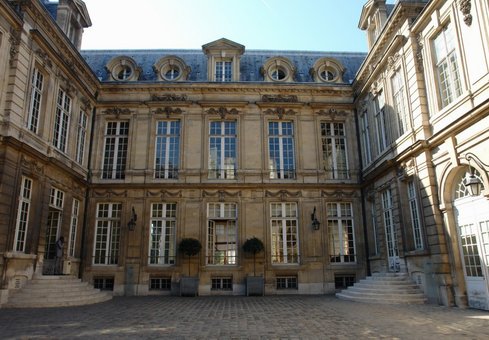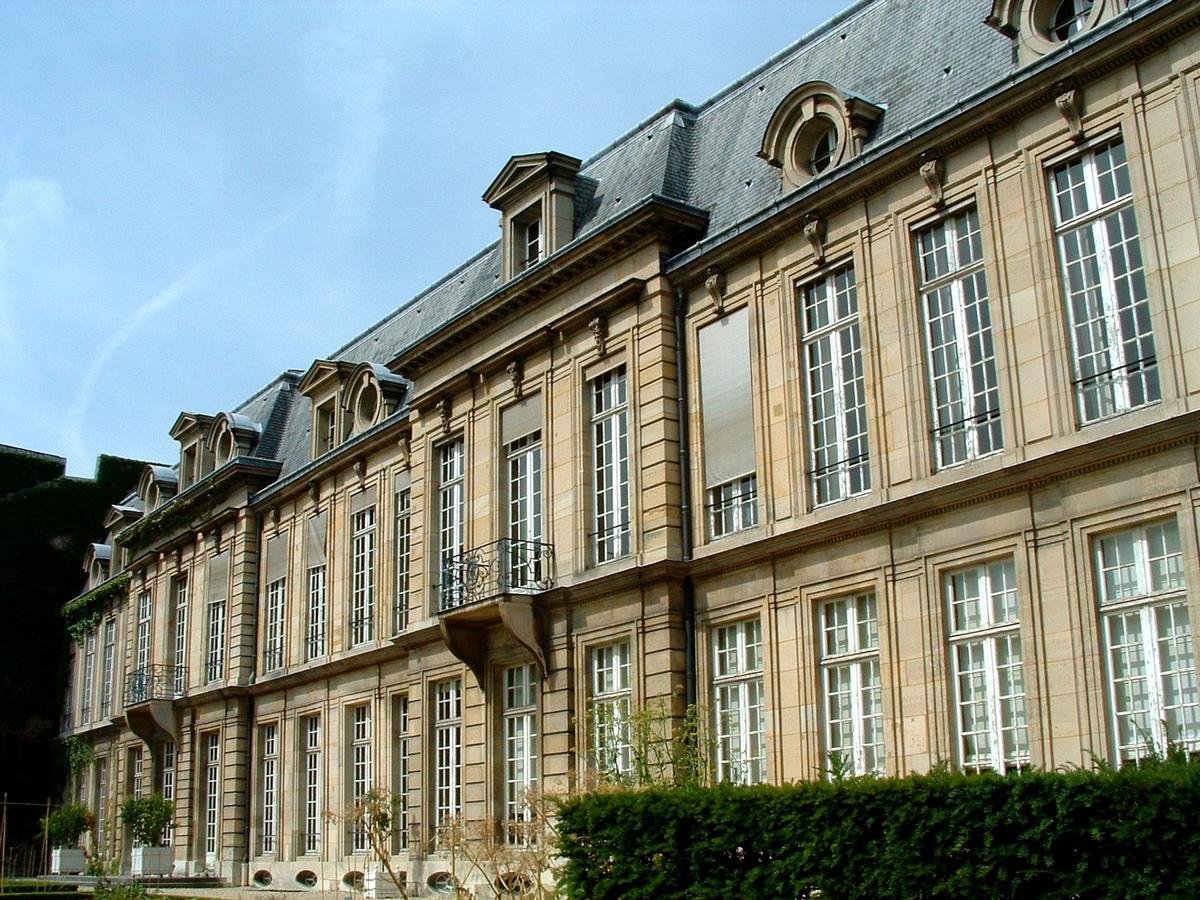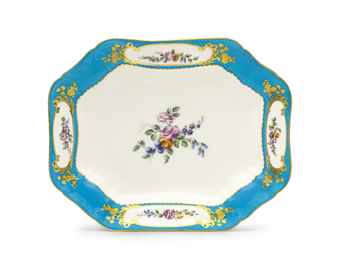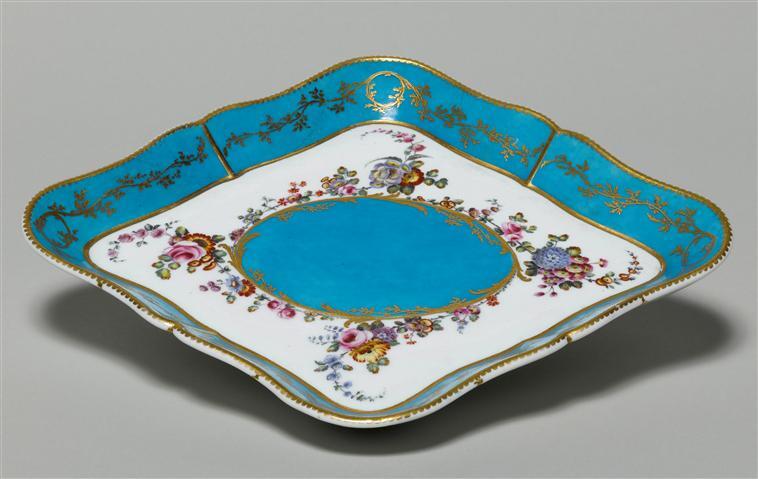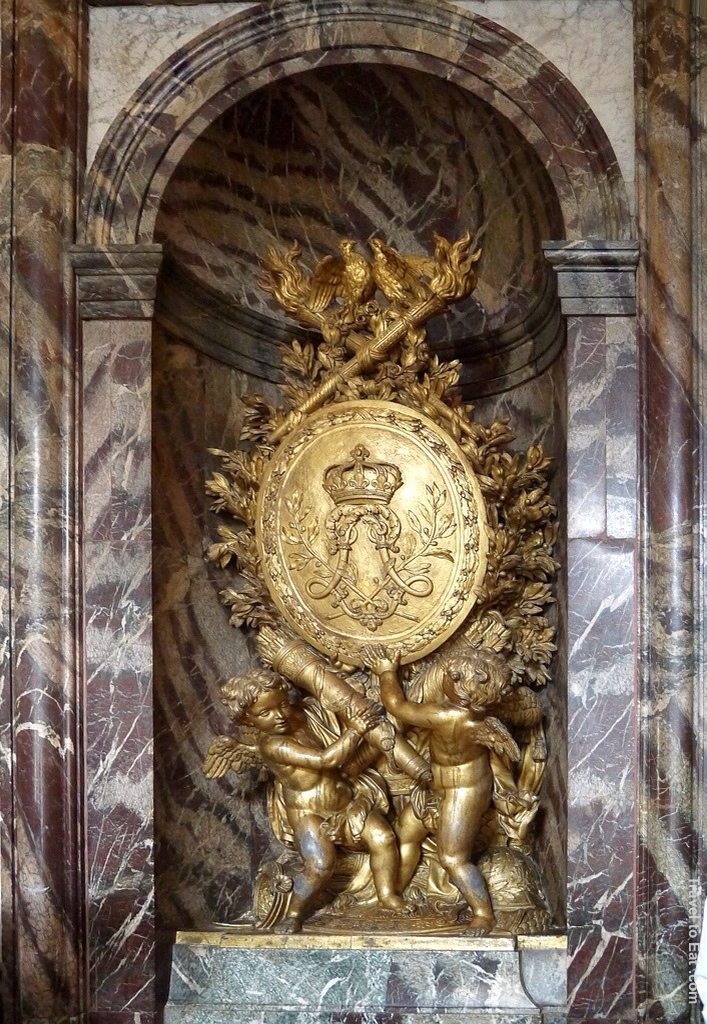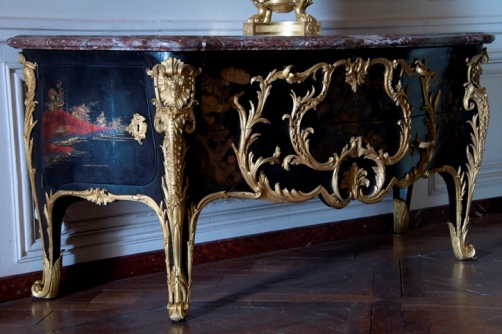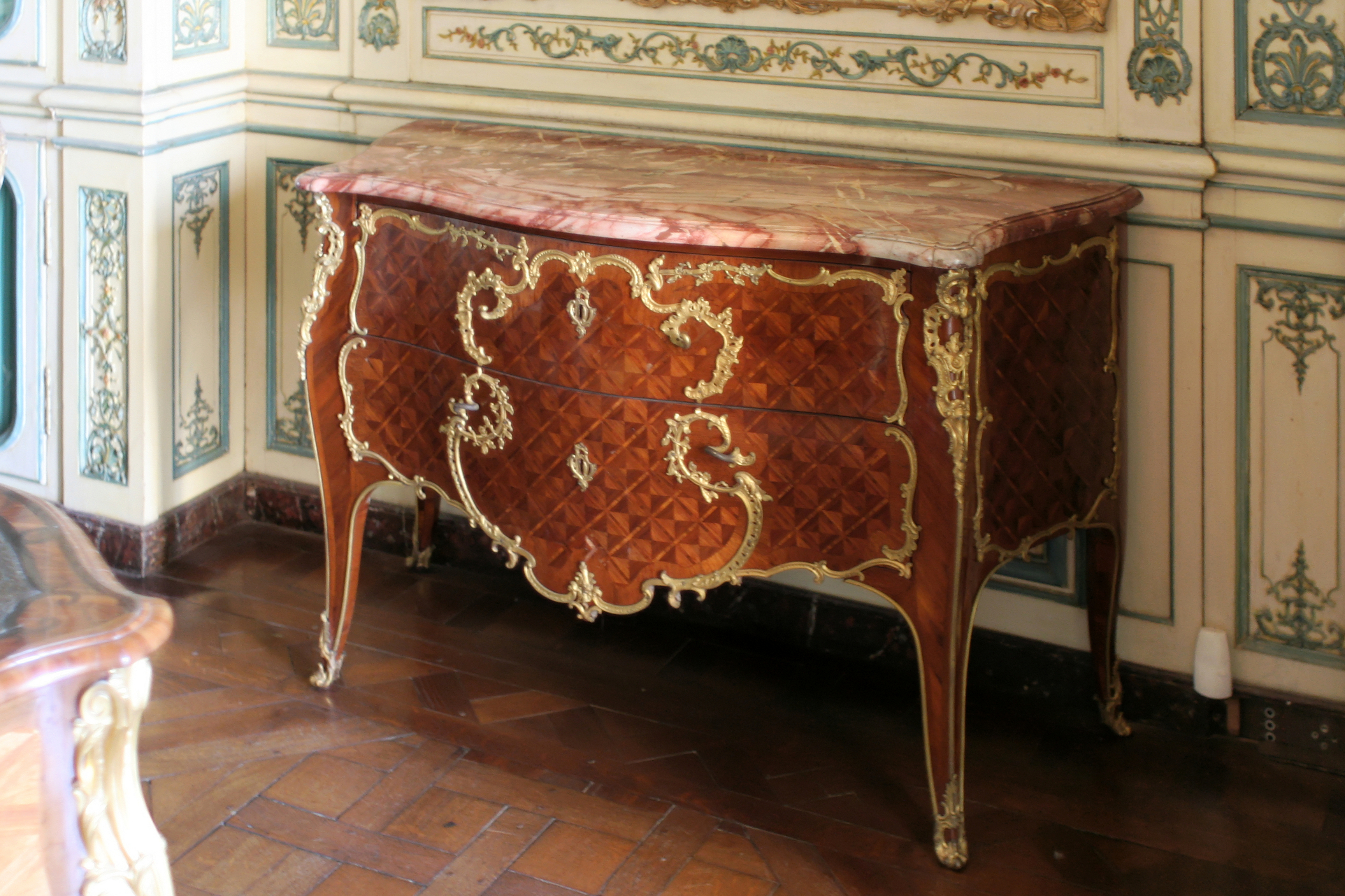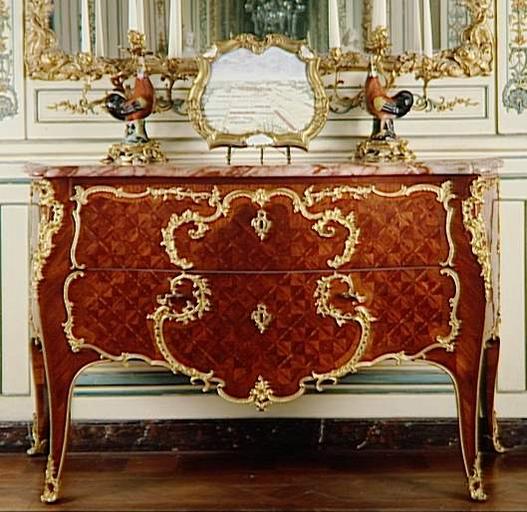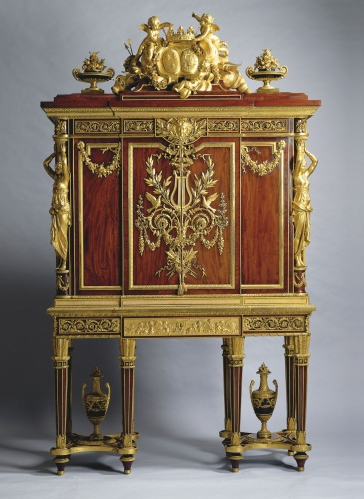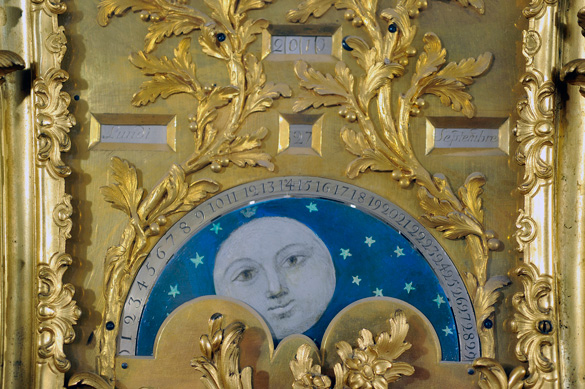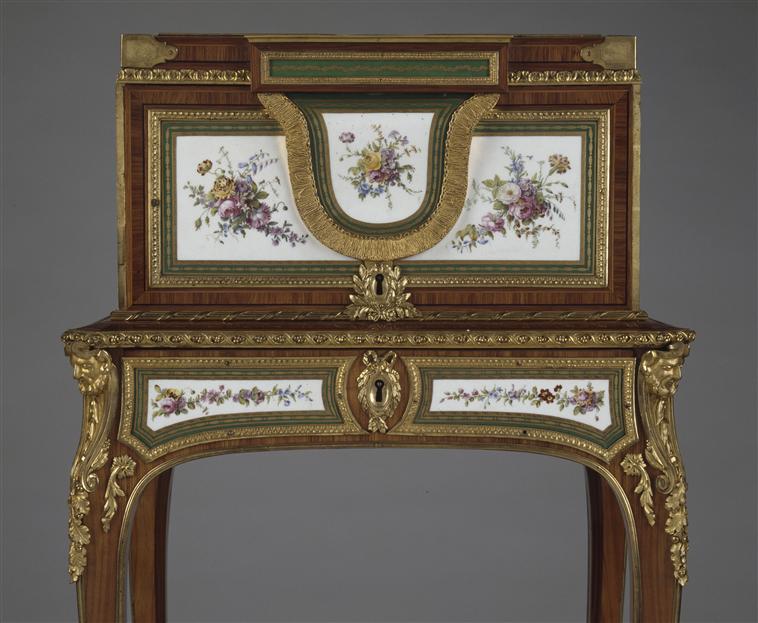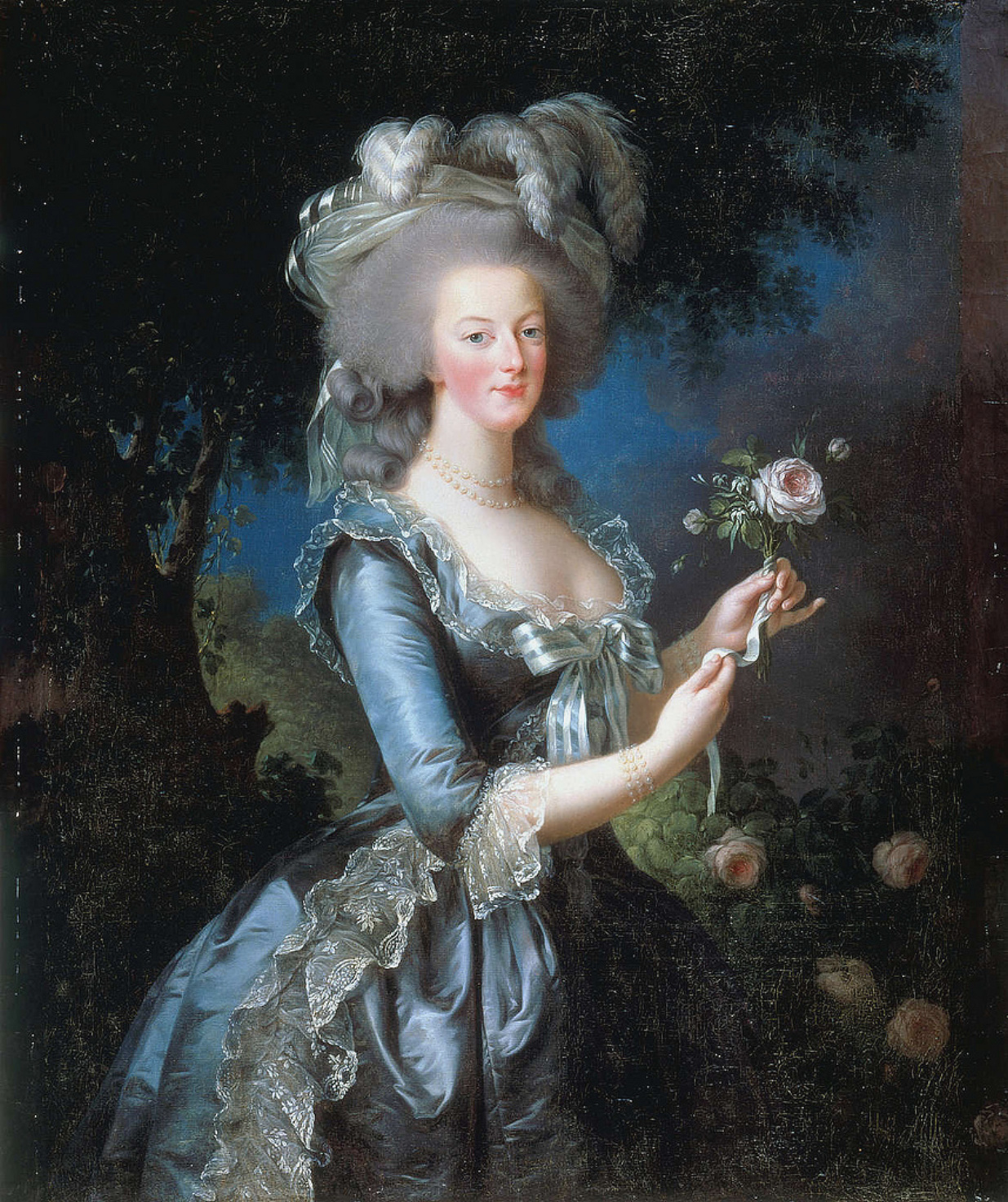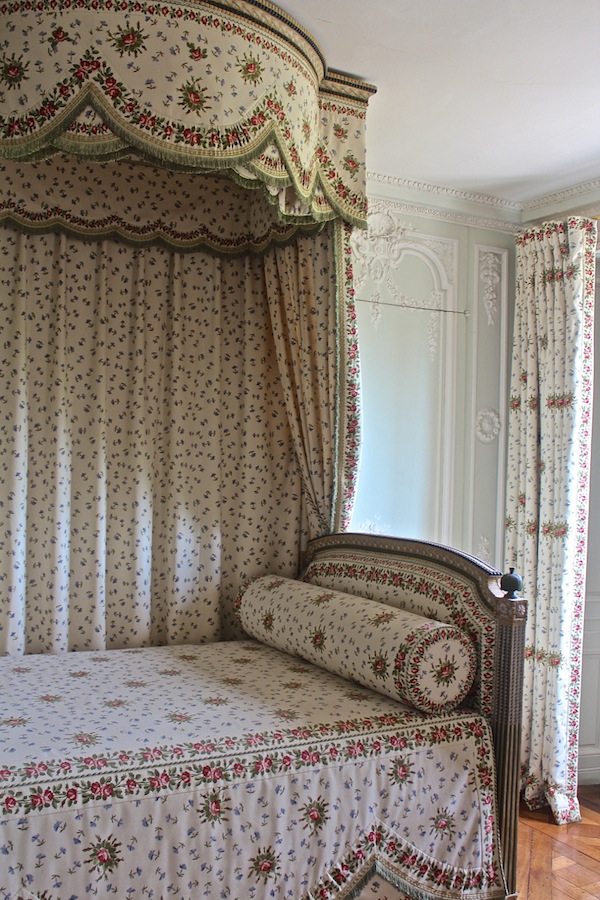Louis XIV might have kept his court well-entertained but since there could not be balls and masquerades every week something else was invented in the intervals. The Appartements - so called because they were generally held in the Grand Apartments - were evening gatherings were there would be plenty of refreshments lined up on silver plates. Dancing and the music were also offered as well as card games. The Court Appartements were held during the winter season.
 |
| A buffet of an Appartement in 1696. This would have been the Salon de Venus |
Usually, the Appartements would be held two-three times every week. These soirées were not dependent on whether the King was there or not; they would go ahead as planned even if he decided not to attend. And for those courtiers who thought it a waste of time to be there when the King was not, they were wrong. In his later years Louis XIV preferred to spent the evenings quietly with Madame de Maintenon but it pleased the King greatly to hear that the Appartements were still well attended.
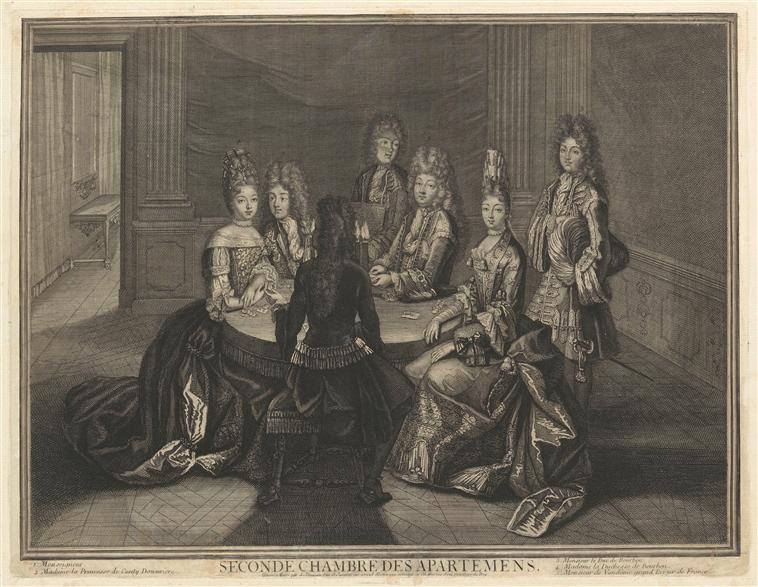 |
| The gambling sessions |
The food served would be served all at once, like a buffet. Everyone could take what they wanted and consequently, the courtiers carried their own knife and spoon with them. The more fashionable would use the newly invented fork (fresh in from Italy) but the King was known to frown upon this new invention. There were desserts as well which mostly consisted of fruits - both fresh and sugared - and another Italian speciality: ices. Sorbets were becoming popular and as it was desirable for the King to show that he, too, could manage to serve ice cold treats (in an age without freezers) were in on it.
There is a lovely series of engravings which gives a hint as to what happened in each room; the series span from 1694-98:
 |
| Theatrical performances in the Salon d'Apollon |
Drinks would be served in another room and would range from the usual wine and liquor to the exotic coffee and teas. Fruits juices were provided in an array of colours; they would usually be flavoured with herbs, spices and nuts.
Actually, each salon in the Grand Apartment had its own purpose during these entertainments (I also mention this on my post on the Grand Apartment). The Salon de Venus was a buffet room where the delicious dishes were elaborately displayed on large tables. The Salon de Mercure was filled with small tables at which different games were played and often at high stakes while the Salon de Diane was reserved for games at billiard. The Salon de Mars was reserved for ballroom dancing while the Salon d'Apollon was for music and theatricals.
The Court Appartements should not be mistaken for the private Appartement which would be far more limited in numbers and a lot more intimate.
 |
| Billiard games in the Salon de Diane |
